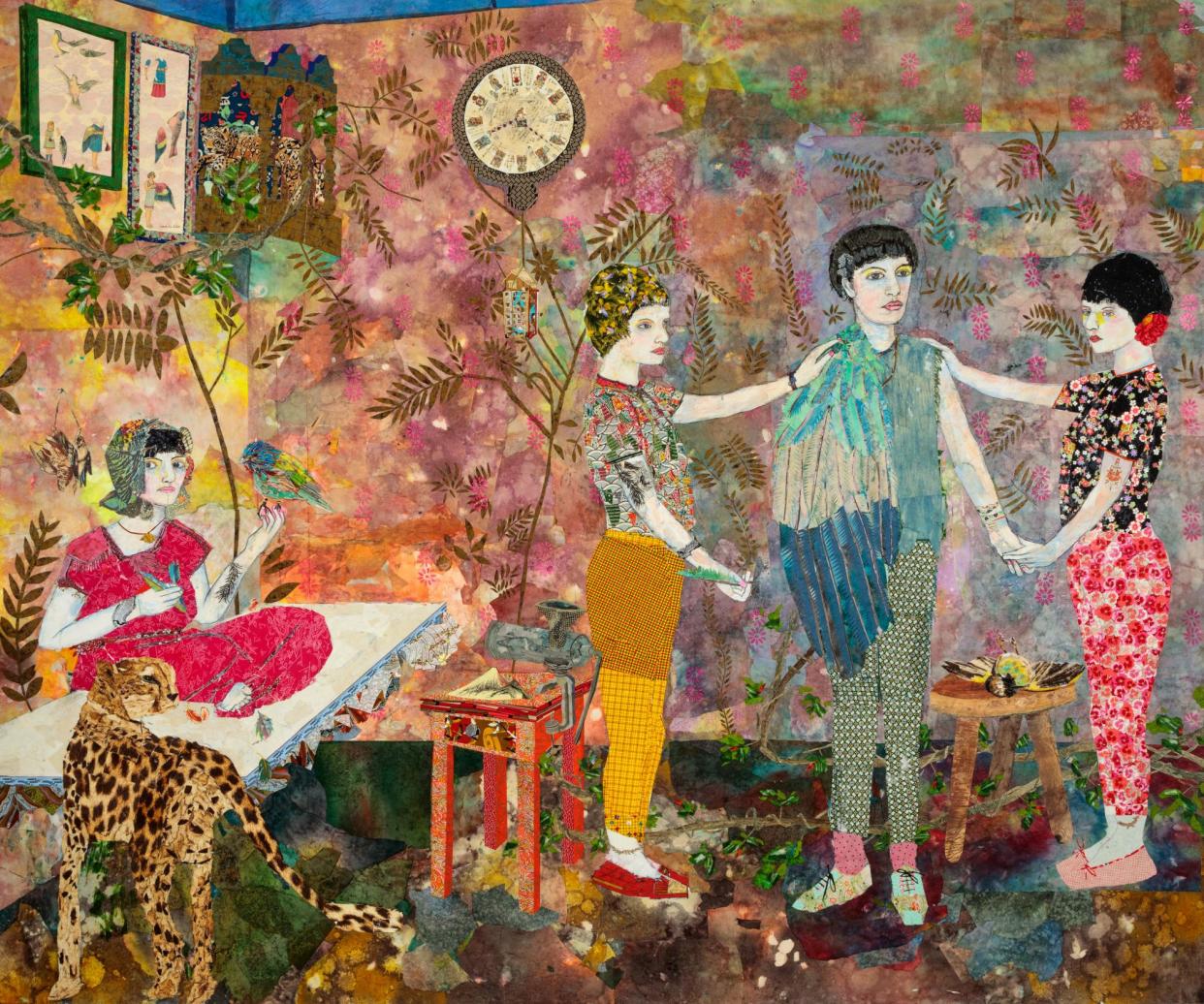Can a painting of childbirth be blasphemous and obscene? The police seemed to think so

Some people say Women’s History Month is a gimmick – a historian in Time magazine even called it a mistake. In 2024, do we really still need to reserve a month to honour the achievements of women? What do we do about the rest of the year: are there 11 history months dedicated to men?
The question of whether celebrations like this keep women as a subset of society is valid. But, to me, Women’s History Month is a time to reflect on those who came before, whose voices were suppressed yet who broke out so that we can enjoy the freedoms we have today. It’s also a time to hear untold stories suppressed by the patriarchy.
I was struck by this when walking around the recent exhibition by Monica Sjöö at Modern Art Oxford. Sjöö, who died in 2005, was a Swedish-British artist who dedicated her life to campaigning for freedom and equality. Through painting, she honoured women such as the activist Emma Goldman, who was imprisoned for distributing material in support of birth control. Through the sacrifices of pioneers like Goldman, women can live more safely today.
Sjöö also painted the ancient goddess she saw as the source of all life. In her 1968 image God Giving Birth, she depicts a woman in the process of having a child, an image mostly invisible in the history of art. Some 54 years ago, when it was first exhibited, the painting was confiscated by the police after someone complained that it was “blasphemous” and “obscene”. Though no charges were brought, not only was this an attack on the artist’s work, it insulted the act of giving birth – and negated the superpowers (some) women need to engage in order to do it.
To understand the suppression of patriarchal systems on an individual level, I turn to the kaleidoscopic collage-paintings by the Colombia-born artist María Berrío. She told me that she often presents part-bird, part-fish characters set in nature or foreign lands “as a meditation on the immigrant experience”. In her 2017 series The Nightingale 1–3, she presents figures with wings that have been clipped, symbolising, as Berrío tells me, “failed migrations … thwarted attempts to reach foreign lands”.
To clip someone’s wings can be a metaphor for patriarchal control – whether confining someone to a domestic place, holding them captive, abusing their body, or taking away their dreams, through making them feel small or denying them opportunities. But Berrío’s works also offer hope. By presenting these hybridised figures, she gives voice to their ambitions, and shows how they can move freely beyond the confines of a single world and cross between planes.
In another work connected to the series, Syzygy, Berrío shows a figure with two friends who are rebuilding their wings, preparing them for flight and, she tells me, “paving a road towards liberation”. This not only shows the power of difference in the winged figure, but the strength of collectivism and community – it takes teams to build a new world. In the corner of the painting are instructions for how to build the wings with the slogan Como ser libre (How to be free).
The power of art – and the power of seeing multiple narratives other than the dominant patriarchal one – is to show us alternative routes to freedom. “My dream is that I can make a painting that does what others’ works have done for me,” Berrío told me. “There are pieces that I have stood in front of that have transported me to an entirely different universe.”
Like the instructions hidden in her artworks, Berrío’s works teach us to champion the oppressed, embrace different viewpoints and work together to actuate change. To deem fundamental truths “obscene” is to create friction between people and societies in order to maintain patriarchal control. This Women’s History Month, we need to look to narratives past and present for instructions on how we can build a better world.

 Yahoo News
Yahoo News 
